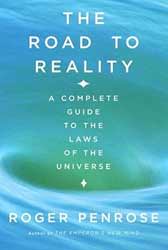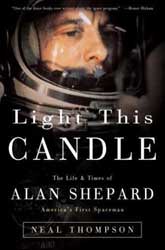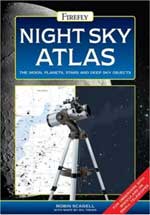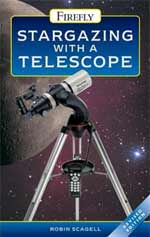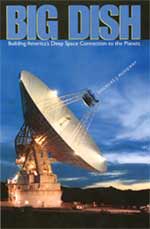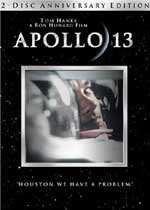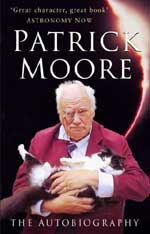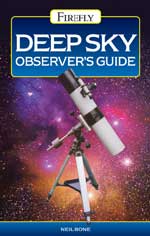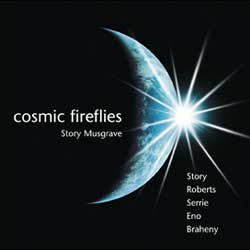
Story Musgrave flew into space six times. His training began in the Apollo era. He was capcom for many flights, including the Skylab missions, and he completed EVA’s, including repairs to Hubble. In total, he has logged over 1281 hours off of Earth’s surface. He certainly has had ample opportunity to reflect upon his circumstances and develop a sense of being space bound. Further, amongst his many accolades he has a master of arts in literature. This combination should remedy the typical astronauts angst at expressing feelings. And it does, as Musgrave, in his disc, portrays a warm, special dimension to space travel.
There are 13 separate tracks on the disc. They alternate between a poem with musical accompaniment and purely musical tracks. Musgrave wrote the poems and does his own recitations. His voice doesn’t have the polish of professional actors, yet enthusiasm and honest feelings are palpably present. And, of course, each of the spoken passages have a direct relation to space.
The first poem presents the ‘rush’ of the rockets launch. An underlying direct feed from an Atlantis launch amplifies the sensation. Another gives a timely and provocative recital of the changing views of Earth seen out the orbiting shuttle’s window. Still another tackles the justification for putting so much natural resources into space exploration. The title piece, Cosmic Fireflies, captures the bedazzlement, like fireworks, that astronauts envision while passing through the Earth’s magnetosphere. Each poem has its own rhythm and sense and each evokes an image or feeling well aligned with space. As a collection, they combine into a journey from the launch, through controlled flight and into the free floating realm that pushes to transcend the pull of gravity and even diminish the continual roar of competition.
The musical style is effectively new age with a touch of techno. Whether in accompaniment or standing alone, each softly encourages reflection and meditation. Perhaps not remarkable on their own, they are nevertheless perfect companions for the poems and add to the emotional journey the listener can travel upon.
This disc would be a perfect addition to an evening spent sitting by a fire and watching the stars. The slow dance of flames would balance with the music and words of the poems. Being outside, under the stars would give credence to the message of humankind’s place on or off planet Earth. However, though the words to the poems are available at the associated web site, it seems a shame that they weren’t included with the disc itself.
As much as people have the power of speech, sometimes we are still left speechless. The wonders of space, perhaps due to their novelty, seem to be well ahead of our descriptive ability. However, Story Musgrave in his compact disc Cosmic FireFlies seeks to redress this situation and the result is a pleasant musical journey and a simple moment for reflecting and pondering.
Visit Story Musgrave’s website at: www.spacestory.com
Listen to samples or purchase a copy of Cosmic Fireflies from Countdown Creations.
Review by Mark Mortimer.

